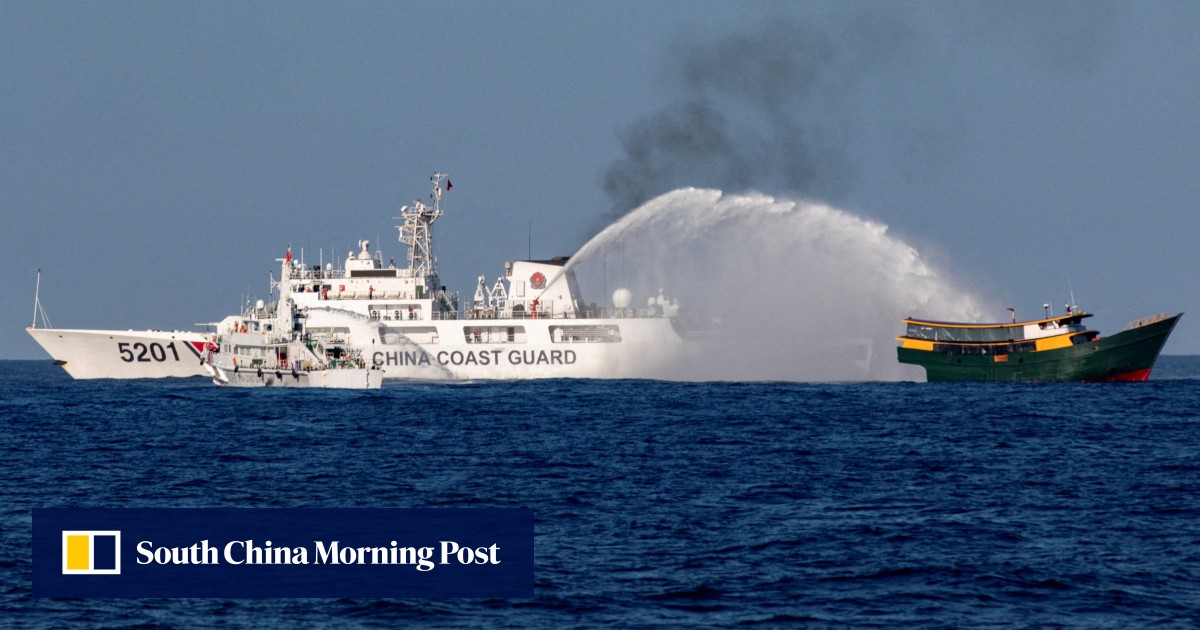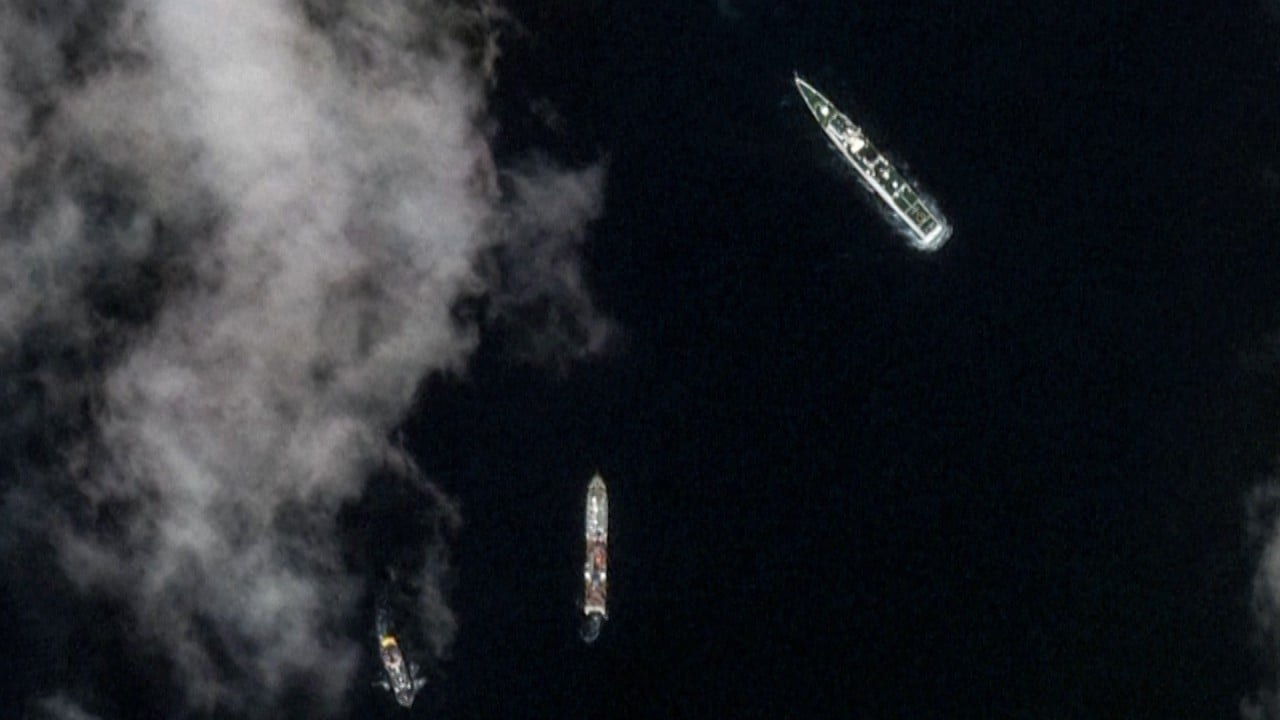A water cannon is a device driven by a high-pressure water pump to generate a strong, high-speed jet. A powerful water cannon can attack targets over 100 metres (328 feet) away, generating a pressure of more than 1.2 megapascals. An adult male facing that head-on could be subjected to an impact force of nearly nine tonnes, equivalent to being stepped on by an African elephant.
In recent months, the Philippine navy has frequently been hit by water cannons during stand-offs with Chinese coastguard vessels. In one notable incident last month, a cockpit windscreen was shattered, injuring several personnel.
It is a problem the smart water cannon aims to address. Developed by the Wuhan Marine Electric Propulsion Device Research Institute, it can automatically identify targets and adjust its power and jet trajectory based on real-time feedback from a photoelectric camera.
The water cannon is also equipped with motion sensors that collect the swing state of the ship to alter the ballistic parameters.
Conditions at sea create complex environmental wind and fluid patterns and mechanical transmission errors, so it can be challenging to lock onto and hit a precise spot on a ship in the distance, such as a smokestack, with a water jet on a swaying coastguard vessel.
But by using inverse reasoning based on the changing environment as well as self-learning, AI has proved it is up to the task, according to the Chinese research team.
In shooting experiments, the smart water cannon could hit surface targets with an error of only two metres under rough sea conditions with four-metre waves and high winds.
This represents a 33 to 54 per cent improvement over traditional automatic water cannons, according to a peer-reviewed paper published in March in the Chinese academic journal Ship Electric Technology by the team led by project scientist Cheng Bosen.
Cheng’s research institute is the largest supplier of naval ship electric propulsion equipment for the Chinese navy and runs some industry-leading laboratories on naval technology.

The world’s first rotatable water cannon was invented by American engineer Antonio Marchese in 1944, and the water cannon driven by an electric motor also first appeared in the United States in the 1950s. Since then, the technology has remained more or less the same due to its limited range of applications.
China has been vigorously developing its maritime forces in recent decades, including electromagnetic catapult aircraft carriers, hypersonic anti-ship missiles, ultra-high-power electronic warfare systems and other cutting-edge equipment.
Recognising this imbalance, the Chinese government has ramped up investment in water cannon technology, developing a range of increasingly automated and powerful products.
The technology has also been aided from an unlikely quarter – China’s infrastructure projects. With large-scale land reclamation and other infrastructure projects under way, China has some of the world’s most powerful dredging vessels that suck seabed sediment to redistribute it to designated areas. The water pump technology involved in that process is perfectly suited to driving high-performance water cannons.
In 2022, China officially listed a water cannon with a range exceeding 100 metres in its export control catalogue, strengthening its dominant position in the use of the weapon.
Zhang Yuqiang, a researcher with the People’s Armed Police Maritime Police Academy Command Department, said that shipboard non-lethal weapons including water cannons “will play an increasingly important role in future maritime conflicts”.
“In recent years, competition and struggles around marine interests and power have become increasingly fierce, and maritime disputes have become a common challenge faced by most maritime countries in the world,” Zhang and his colleagues wrote in a paper published in the journal China Equipment Engineering in February.
Because all sides are “fighting for every inch of land and refusing to cede an inch”, using traditional lethal weapons in small-scale skirmishes can see them escalate into large-scale armed conflicts. It is a situation that neither China nor other countries around the South China Sea wish to see.
“Non-lethal weapons do not directly cause human death, equipment destruction and ecological damage. They only use specific technical means to deprive the other party’s personnel or equipment of their combat effectiveness, achieving the goal of ‘subduing the enemy without fighting’,” Zhang’s team wrote.
Other major maritime countries are now stepping up research and deployment of other types of non-lethal weapons, including blinding lasers and microwaves that can cause skin-burning sensations, they said.
There is also a particularly strong interest in infrasound weapons that “can cause dizziness, nausea, dyspnea and even neurological disorders”.
“Infrasound weapons have the characteristics of strong penetration, fast propagation speed, good concealment and long-range. In addition to attacking ships on the ocean surface, they also pose a significant threat to submarines in deep seas and will play an essential role in future naval battles,” they added.







